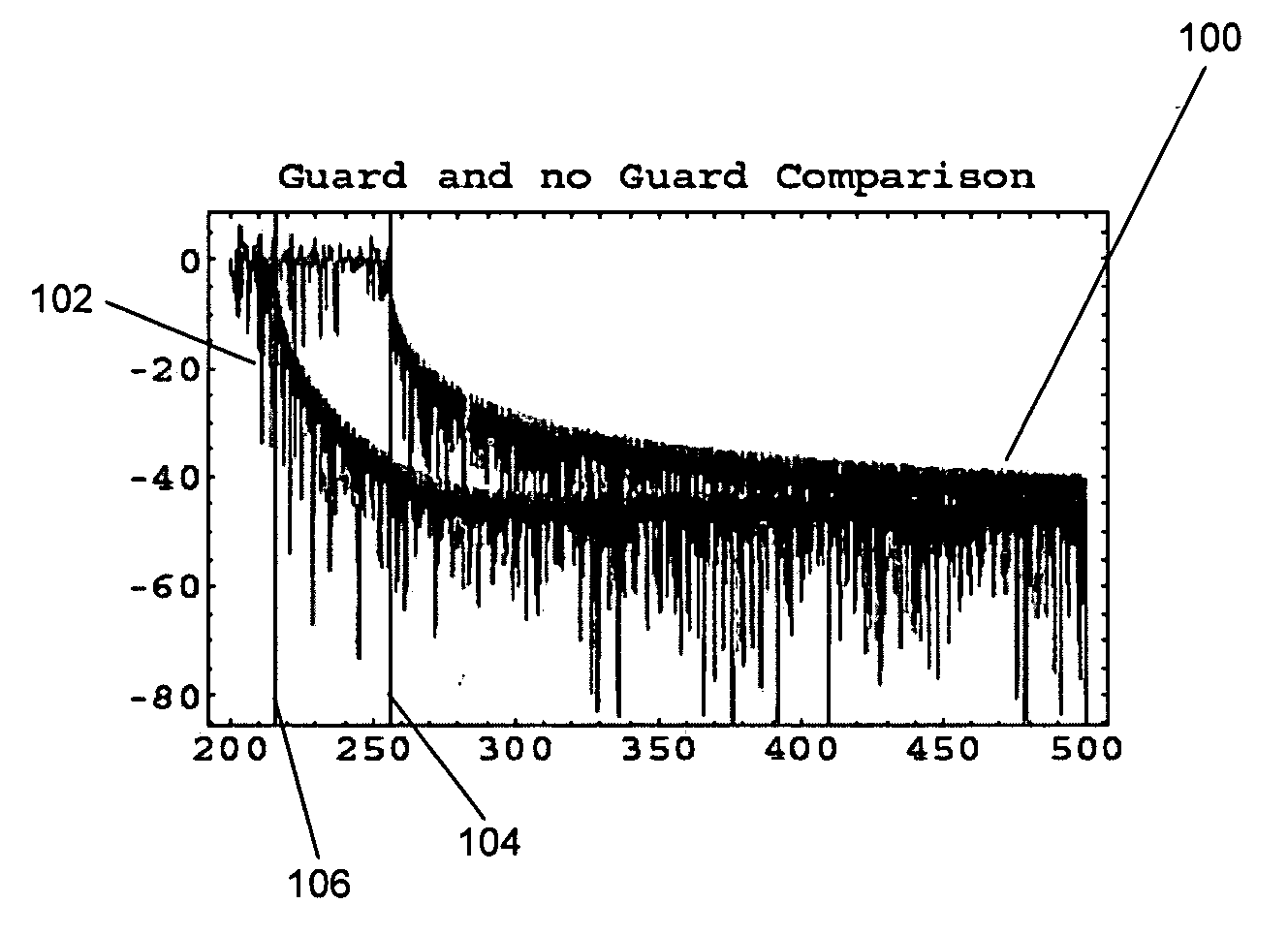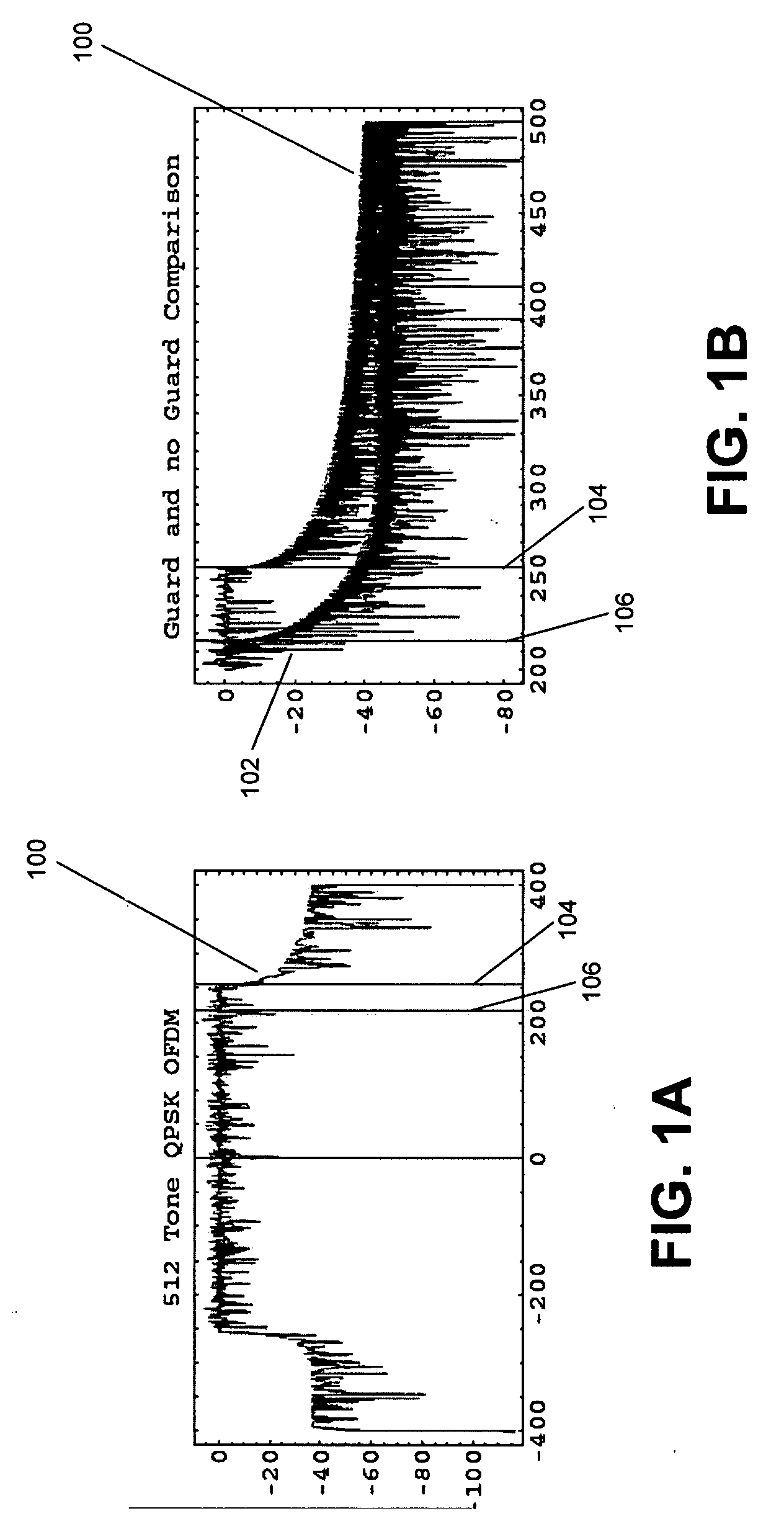Method for suppression of OFDM energy spectral density for minimization of out of band emission or utilization of fractured spectrum
a technology of energy spectral density and suppression method, applied in direction finders using radio waves, instruments, orthogonal multiplexing, etc., can solve the problems of bandpass filtering, add hardware complexity, and 15.4% wasted bandwidth in the use of guard tones, and achieve the effect of suppressing orthogonal frequency division multiplexing
- Summary
- Abstract
- Description
- Claims
- Application Information
AI Technical Summary
Benefits of technology
Problems solved by technology
Method used
Image
Examples
case 1
Sample Results—Case 1
[0052] The first case is the active cancellation of the regions just outside the passband. The 512 tone QPSK modulated OFDM signal with 79 guard tones as shown in FIG. 1B is the starting point. Eight of these guard tones were selected for active cancellation of the energy spectral density in two regions just outside the passband. The lower region starts at the last active tone at −257 and extends out to the equivalent of tone −500. The upper cancellation region starts at the last active tone at 256 and extends to the equivalent of tone 500. The 8 guard tones which are energized to achieve cancellation are {256,.241,.226,.211, 210, 225, 240, 255}.
[0053]FIGS. 2A-2B shows the set of 8 orthogonal basis vectors that were formed. FIG. 2A illustrates the eight vectors 200 that were used in the lower cancellation region and FIG. 2B illustrates the eight vectors 202 that were used in the upper cancellation region. FIG. 3 shows a close up of the base vectors in a portion...
case 2
Sample Results—Case 2
[0055] The next case is an extension of the first. The setup is similar except that a third cancellation region was added which extended from tone 30 to tone 50. This allowed for the case where the available spectrum is fractured into two by an intervening stay out zone (from tone 30 to 50). The goal was to see how much cancellation could be achieved across the three zones. Guard tones were added on either side of the stay out zone such that tones 0 through 80 were not used for data. Additional energized tones were added to the 8 used in Case 1. The new energized cancellation tones for this case were {1, 14, 29, 52, 67, 82}.
[0056]FIG. 8 shows the pre-compensated input 800 with stay-out zone 802. FIG. 9 illustrates shows the 14 developed orthogonal cancellation signals, lower cancellation zone signals 900, upper cancellation zone signals 902, and stay-out zone cancellation signals 904, with tone number on the x axis.
[0057]FIG. 10 illustrates the cancellation ef...
PUM
 Login to View More
Login to View More Abstract
Description
Claims
Application Information
 Login to View More
Login to View More - R&D
- Intellectual Property
- Life Sciences
- Materials
- Tech Scout
- Unparalleled Data Quality
- Higher Quality Content
- 60% Fewer Hallucinations
Browse by: Latest US Patents, China's latest patents, Technical Efficacy Thesaurus, Application Domain, Technology Topic, Popular Technical Reports.
© 2025 PatSnap. All rights reserved.Legal|Privacy policy|Modern Slavery Act Transparency Statement|Sitemap|About US| Contact US: help@patsnap.com



